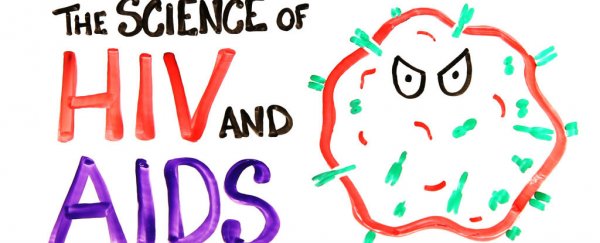It might seem like we're getting a better handle on HIV/ AIDS, with patients now able to live long, happy lives with the disease - as long as they keep taking their antiretrovirals. But despite the incredible amount of research being performed around the world to better prevent, treat, and understand it, HIV/AIDS infections have killed around 39 million people over the years, and right now, there are 35 million patients living with the disease. So how close are we to finding a cure?
First off, for you to contract HIV, the virus needs to enter the bloodstream somehow. The easiest and most common modes of transmission are via infected bodily fluids, such as semen, vaginal fluids, blood, or breast milk. Once inside, the virus affects a range of different cells, but it's the body's T-cells - a type of white blood cell - that are most heavily affected.
As the boys from AsapSCIENCE explain, the outer envelope of HIV is covered in glycoproteins, which have the ability to mutate rapidly in the bloodstream. This means the T-cells don't recognise HIV as a threat, and the virus is free to fuse with these immune cells, break through their outer membrane, and release two viral RNA strands and three essential replication enzymes inside.
HIV is known as a retrovirus because its RNA is transcribed into its DNA, which is then integrated into the host T-cell's genome. Because our immune cells can't tell the difference between their own DNA and the HIV DNA, they treat the viral genes as their own and proceed to make more copies of the virus. These then go off into the bloodstream in search of more unsuspecting T-cells to merge with.
It's devastatingly effective, which makes it so hard for doctors to combat. The replication process can create more than 10 billion new virions every single day.
This replication stage - known as the latency period - can last for up to eight years, and the infected person might not even show any symptoms at all. But if not treated, the HIV eventually kills off the specific T-cells it infects, says the video above, and when they fall below 200 cells per cubic millilitre of blood, the patient will be diagnosed with AIDS.
So how close are we to preventing the spread of HIV in the first place? I'll let AsapSCIENCE explain that in their latest video, but it has to do with a small group of people who are naturally immune to HIV thanks to a particular mutation linked to their T-cells. It's enough to be hopeful about what scientists are going to find in the not-so-distant future.
